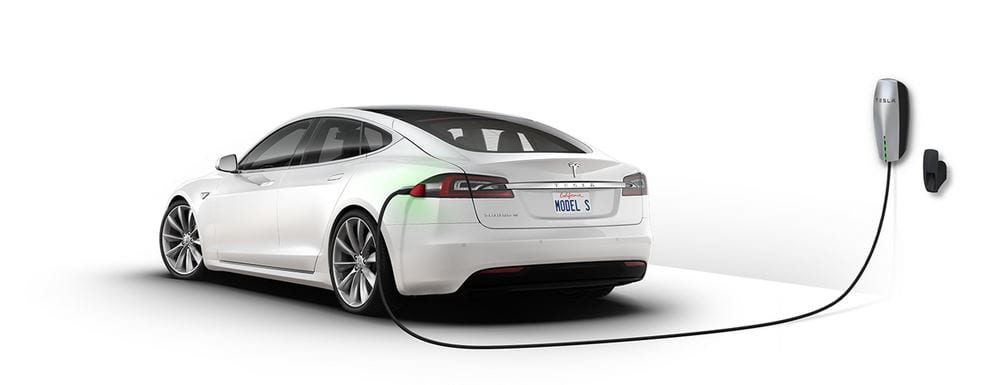I research how electric vehicles (EVs) can help the grid accommodate larger amounts of variable renewable energy such as wind and solar.
EVs and solar power can contribute both separately and together to reducing greenhouse gas emissions. One of the major entrepreneurs in this space, Elon Musk, has started an electric vehicle company, Tesla, and helped start a solar photovoltaic (PV) power installation company, SolarCity. In June, he proposed that Tesla buy SolarCity. Terms have been approved by the companies’ boards of directors. The next step is shareholder approval.
Let me be clear: I don’t know enough about the workings of Tesla and SolarCity to discuss the specifics of this particular merger. I don’t have any insight into their management, technology development, or cash flow projections beyond what we can all read online. If you are a shareholder of either company, I’m not going to suggest how you should vote.
I am interested in the general relationship between solar, EVs, and energy storage. So let’s look at that without getting too wrapped up in these particular companies.
Solar and EVs
Tesla notes that its retail outlets can help SolarCity identify potential solar PV customers, reducing customer acquisition costs. This is an important step in reducing the costs of installed solar power systems. Fortunately, there appears to be considerable overlap.
A 2015 Massachusetts survey of EV rebate recipients found that 17% currently had solar PV systems, and another 24% planned to install such systems within a year. A 2014 California survey found that 32% of EV owners had PV systems, with another 16% planning to install.
The most obvious connection here is interest in reducing environmental impact. Solar PV systems add clean power to the grid and reduce greenhouse emissions from coal or natural gas power plants. EVs avoid tailpipe emissions from vehicles (and result in fewer emissions overall). People interested in one technology may adopt the other for that reason.
A second point of connection is that adding EVs to the grid will help the economics of utility-scale solar power, if those vehicles can charge during the daytime (such as with workplace charging) when the solar power plants are generating electricity. In regions like California, an abundance of solar power can result in mid-day power being the least expensive, making it advantageous to shift as much load as possible to that time of day.
EVs and storage

EV companies and their suppliers are working to make batteries less expensive, longer-lasting, and more energy-dense. Some of these companies use or sell batteries for stationary applications, in which case they do feed power into the grid. BMW uses old EV batteries to back up its “Smart Charging” pilot in California. Daimler has alsoentered the stationary storage business, as has Nissan. Tesla, of course, has the Powerwall and Powerpack.
Storage can improve the economics for EV charging, especially at workplaces. Workplace charging can increase familiarity with EVs, provide increased range, and help the grid manage large amounts of solar power. However, electricity bills for commercial buildings are in part based on their maximum power demand at any one time, their maximum rate of energy consumption. (Most households, by comparison, just pay for the total energy used over the course of a month.)
EV chargers can draw a lot of power. At the workshop I organized, utility experts noted that these demand charges can be an obstacle to workplace charging. One solution might be to incorporate storage into the chargers. This could allow high-powered fast charging without incurring high demand charges.
Here’s how it works: The demand charge is based not on how much power a system uses, but on how much it draws from the grid at any one time. If the system slowly fills up the batteries overnight from the grid, then discharges rapidly from the batteries into EVs when needed, it won’t have a high demand charge for that high-powered burst. It will have one for that low-power draw that fills the batteries in the first place. This is the approach used by Green Charge Networks and ChargePoint, as well as some other systems. Tesla has deployed its batteries at some of its Supercharger stations, presumably for this purpose.
Solar and storage
Does solar power need storage? Not in most cases. A reliable power grid means keeping supply and demand in balance at all times, which becomes more challenging when greater quantities of variable resources, like solar, are added to the grid.
Batteries are just one set of tools that we can use to help balance the system. Flexible dispatchable generation, flexible loads, and importing or exporting power are other grid management strategies, as is geographic diversity to reduce the variability of solar generation.
Some areas, like Hawaii, have fewer options for balancing the system. The individual island grids are small and isolated, eliminating the potential of import/export and limiting the potential of geographic diversity. Solar penetration is already quite high. As a result, SolarCity built a solar power plant on the island of Kaua’i that incorporates Tesla batteries.

Since storage might become the least-cost option for balancing the grid at a high level of solar, numerous states are looking to help the industry establish a foothold and ensure that their grid operators are familiar with the technology.
Storage is necessary if you are off-grid. Off-grid homes may use solar and batteries, perhaps with a generator for prolonged cloudy periods. Even grid-connected homes may feature batteries for back-up power, to run critical loads during outages. Envision Solar makes standalone EV chargers that incorporate storage and solar, avoiding the costs of digging up a parking lot to lay electrical conduit.
Other projects bringing together solar, storage, and EV charging include the Benicia City Hall in California, the GM E-Motor Plant in Maryland, and the Clay Terrace Mall in Indiana.
The bigger picture
EVs generally produce fewer greenhouse gas emissions than internal combustion vehicles. And, they will continue to improve as the electricity that fuels them becomes cleaner. Electricity can be made in many ways, some of them very low-carbon. While other options for broad decarbonization of the economy exist, I think the most likely pathway is electrification.
This pathway involves converting energy demands to electricity (as EVs do), adding more low-carbon electricity to the grid (as solar PV does), and implementing any necessary enabling technologies (like managed charging or dedicated storage). Both Tesla and SolarCity have offered to help utilities deploy such technologies and transition to the “grid of the future.”
I don’t know if Elon Musk is going to succeed. There are synergies between EVs and solar, so the basic concept seems sound. The biggest risk is that somebody else might execute it better.
Source: Union of Concerned Scientists. Reproduced with permission.








